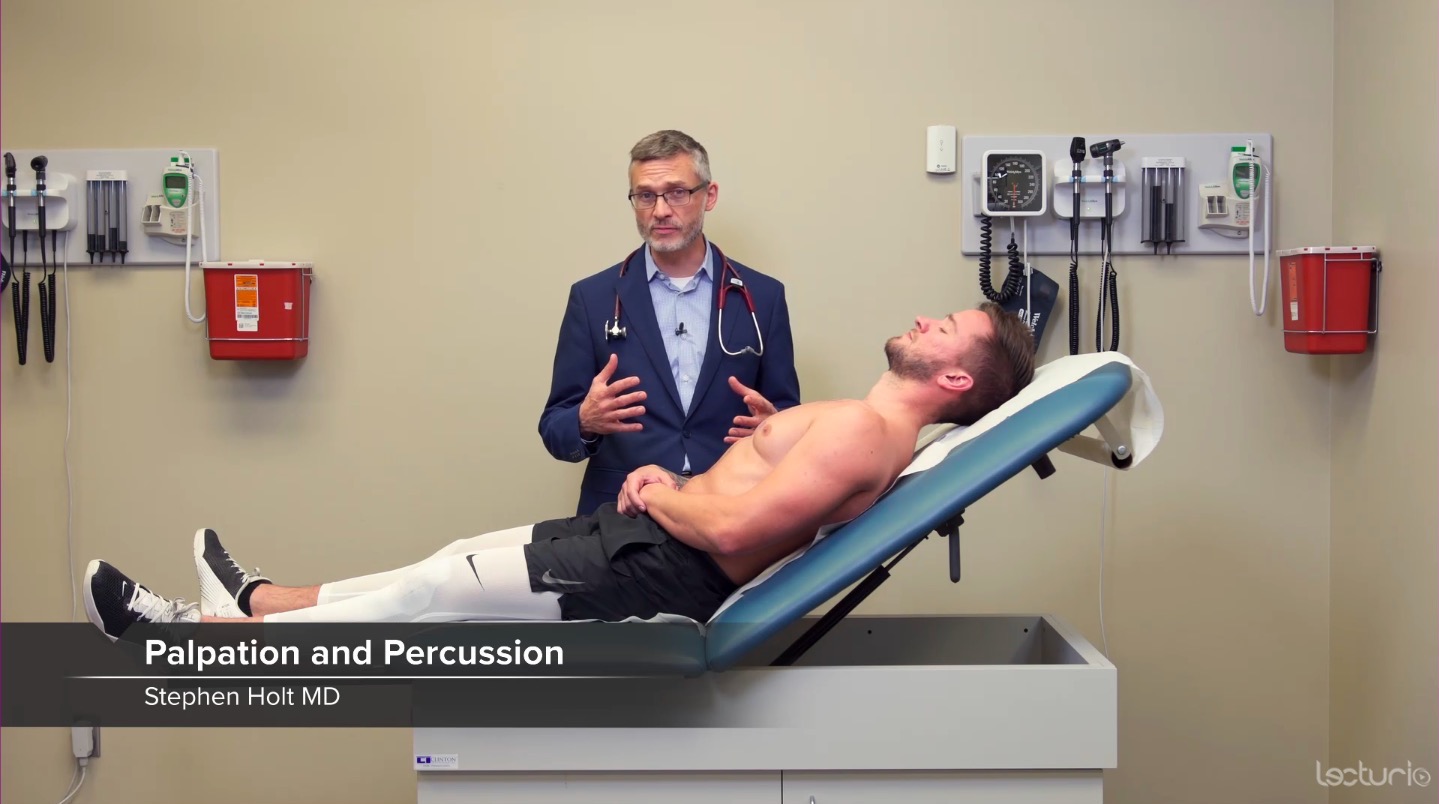Playlist
Show Playlist
Hide Playlist
Palpation and Percussion of the Heart
-
Reference List Physical Examination.pdf
-
Download Lecture Overview
00:01 So having reviewed the auscultation of different types of valvular disease, it's worth us taking a look at a little bit about percussion and palpation of the heart. 00:09 These are definitely smaller topics in terms of cardiovascular exam. 00:14 First off, palpation. 00:15 You can put your hand over the apex of the heart and you may be able to appreciate the point of maximal impulse. 00:22 I can say that in a lot of patient it's very difficult to find, particularly someone who has COPD, for whom there's hyperinflation, there may be a lot of distance between your hand and the left ventricular impulse. 00:34 But in most people, it will be just a little bit further away maybe a little bit lateral from the nipple. 00:39 If it's significantly displaced over to the interaxillary line or even in the mid-axillary line that would suggest evidence of left ventricular hypertrophy or potentially just left ventricular dilation. 00:53 Lastly, in terms of percussion, historically people used to percuss the borders of the heart, it's not something which is particularly useful nowadays, but one time where percussion may be useful is for example in folks with emphysema. 01:05 So, as you may recall with emphysema, the heart -- in the pericardium, is attached to the diaphragm but in COPD the diaphragm which normally would be a dome shape, is pushed all the way down did all that increased dead space in the thorax. 01:20 So if the diaphragm is pushed down, the pericardium, which would have been over here, is also pulled down towards the midline and as such, if you were to percuss over that area, you might find resonance which we'll talk more about in the pulmonary section, but you're not going to hear the dullness that you'd expect over somebody's left ventricle. 01:39 In fact, you may find their point of maximal impulse, with someone with severe COPD all the way down here at the subxiphoid area as opposed to over here in the anterior axillary line. 01:51 That's all we'll really talk about with palpation and percussion of the heart. 01:55 Now, let's talk about a few specific findings of some cardiac conditions.
About the Lecture
The lecture Palpation and Percussion of the Heart by Stephen Holt, MD, MS is from the course Examination of Cardiovascular and Respiratory System.
Included Quiz Questions
What is TRUE regarding the point of maximal impulse (PMI)?
- In patients with severe COPD, the PMI may be found at the subxiphoid area.
- Percussion of the heart is the most accurate method to locate the PMI in all patients.
- The PMI is usually found at the center of the chest, regardless of any underlying heart conditions.
- The PMI is typically located in the mid-axillary line in a healthy individual.
- The PMI is always easiest to palpate in patients with COPD due to the diaphragm being pushed down.
Customer reviews
5,0 of 5 stars
| 5 Stars |
|
5 |
| 4 Stars |
|
0 |
| 3 Stars |
|
0 |
| 2 Stars |
|
0 |
| 1 Star |
|
0 |




